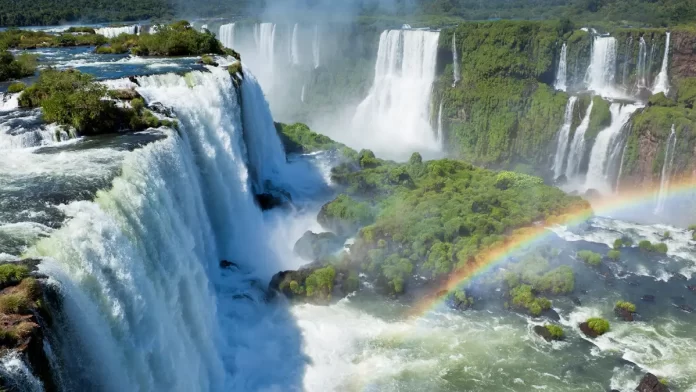The Iguazu Falls, located on the border between Argentina and Brazil, is one of the most breathtaking natural wonders in the world. With its majestic cascades and lush surroundings, the falls attract millions of visitors each year, eager to witness its awe-inspiring beauty.
Stretching over 2.7 kilometers (1.7 miles), the Iguazu Falls is a collection of over 275 individual waterfalls, with heights ranging from 60 to 82 meters (197 to 269 feet). The most famous of these is the Devil’s Throat, a U-shaped cascade that plunges over 80 meters (262 feet) into the churning waters below.
Visitors to the falls can explore the area via a network of walkways and viewing platforms, offering panoramic vistas of the cascades from various angles. The surrounding rainforest is teeming with biodiversity, home to a diverse array of plant and animal species, including toucans, monkeys, and jaguars.
Both Argentina and Brazil offer access to the falls, each providing unique perspectives and experiences. The Argentine side allows visitors to get up close to the falls, with trails leading to the base of several cascades. On the Brazilian side, visitors can enjoy panoramic views of the entire complex, offering a broader perspective of the falls in all their glory.
Regardless of which side you choose to visit, the Iguazu Falls promises an unforgettable experience, leaving visitors in awe of nature’s raw power and beauty.



